Bone resorption assay
Useful assay for the research of skeletal metabolism
PNIPAAm-PEG a block co-polymer of poly(N-isopropylacrylamide) and poly(ethylene glycol) for 3D cell culture and other applications
Hydrogels are a diverse class of polymeric materials characterized by their network-like structure and high water content. Hydrogels of many kinds have found a wide variety of applications in medicine and life science research weighted towards, but not at all limited to three-dimensional cell culture, tissue engineering, and drug delivery. Properties highly favorable to cell culture and tissue engineering applications prompted the commercialization of Mebiol® Gel, a copolymer of poly(N-isopropylacrylamide) and poly(ethylene glycol) (PNIPAAm-PEG) for research purposes in the early 2000’s.
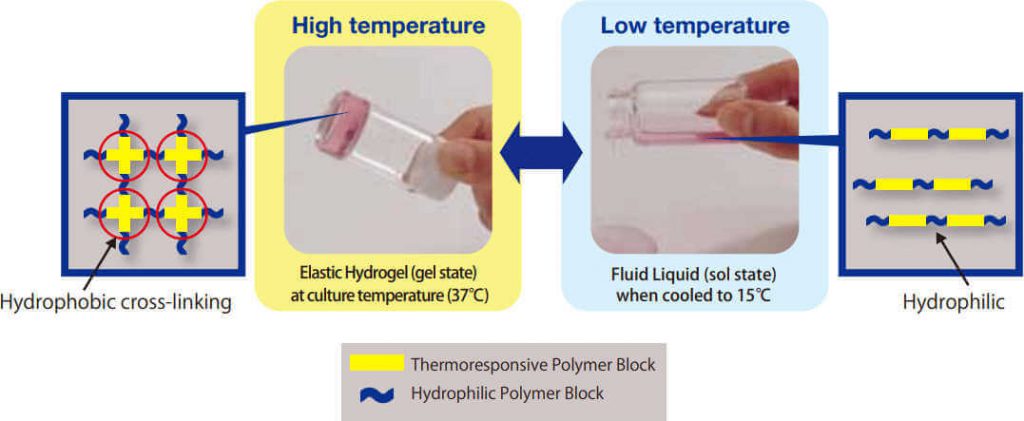
Mebiol Gel’s defining feature, in contrast to other commercially available hydrogels, is its temperature reversible sol-gel transition. When cooled, Mebiol Gel is a sol (handles like a liquid) but becomes a rigid hydrogel at higher temperatures. In practice, this means extremely easy cell handling. Cultures are seeded into cooled Mebiol Gel and recovered conveniently by cooling the culture vessel and centrifugation. In the gel state, the highly lipophylic environment of the Mebiol Gel presents an efficient niche for cell proliferation, cell communication, gas and mass exchange, and protection of cells and tissue from shear forces.
In collagen and other 3D gel cultures, proliferation of primary cancer cells may be inhibited by fibroblast overgrowth. Importantly, fibroblasts do not readily grow in Mebiol Gel, allowing selective proliferation of primary cancer cells for further analysis and characterization.

Macaca embryonic stem cells cultured on Mebiol Gel without LIF (right panel) show morphology and alkaline phosphatase staining characteristic of undifferentiation compared to 2D feeder layer cultures (left panel).
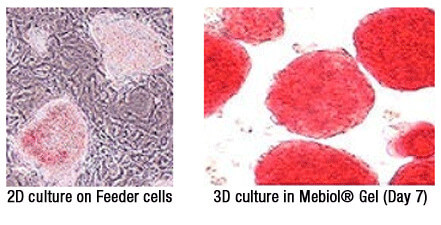
Mebiol Gel supports spheroid formation of cancer cell lines and iPS cells.
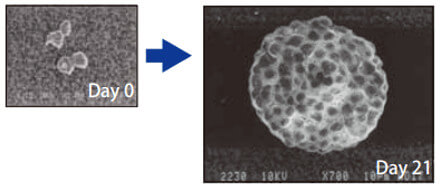
Mebiol Gel’s protective environment helps to preserve tissue structure over long term culture.
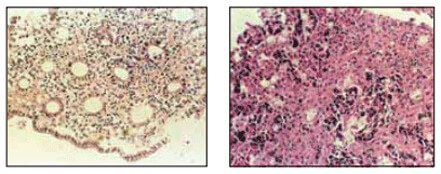
Mebiol Gel usage (refer to package insert for details)


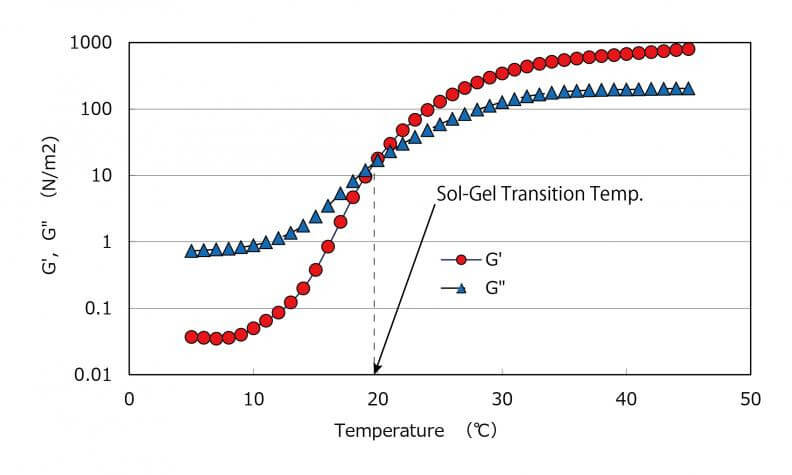
| Mebiol® Gel (MBG-PMW20) |
We gladly support you by keeping you updated on our latest products and the developments around our services.